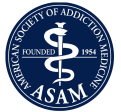A common complication of drug abuse is the adverse psychological effects, one often experiencing apathy or depression. This is because substance use disorder interferes with behavioral and mental functions. After an addiction has formed, there’s a high potential for added distress in withdrawal and the months that follow. As a result, many people try to recover from addiction but relapse to avoid mental and emotional discomfort. Commonly, a large part of this discomfort is a result of anhedonia.
What Is Anhedonia?
In short, anhedonia is the inability to feel pleasure. To clarify, “pleasure” is a catch-all term for positive emotions like happiness, joy, excitement, in addition to euphoria. Many people struggling with anhedonia during early recovery complain of boredom, for lack of a better word. Anhedonia is most commonly associated with withdrawal from stimulants such as meth or cocaine. In other words, the unsettling depression and emptiness that occurs once a drug’s effect has worn off is anhedonia at its worst. However, anhedonia’s reach extends beyond a stimulant use disorder.
What Causes Anhedonia?
Anhedonia is generally associated with depression and other mental health disorders. It links to health concerns such as Parkinson’s disease and heart disease. Mental and physical health disorders that affect the production of dopamine (Parkinson’s, depression, etc) and deplete brain health from oxygen-deprivation (heart disease) can result in anhedonia.
Moreover, anhedonia is often a result of substance abuse.
During addiction, the brain is forced to create dopamine, over and over with each period of drug abuse. As a result, the brain tries to correct itself, decreasing the production of natural dopamine. However, once an addicted person detoxes, the brain doesn’t know to resume dopamine production. Subsequently, early recovery is difficult not only for the physical side effects of withdrawal but the anhedonia due to a lack of dopamine.
Misconceptions About Withdrawal
During early recovery, many people have no knowledge of anhedonia before going into withdrawal. As a result, they often end up romanticizing their depression, blaming their misery on the absence of their substance. In reality, the feelings of emptiness are a direct result of their substance abuse.
Additionally, drug abuse once brought them pleasure, so people often excuse relapse, claiming it’s the only way they will feel better. Unfortunately, the more of a substance they abuse, the higher their tolerance grows. As a result, people build up such a tolerance that drug abuse provides no pleasure at all. Instead, they require the drug solely to delay physical withdrawal symptoms.
It’s understandable, however, that pain causes rationalizations for relapse when people believe it’s the only way they can experience happiness. That is to say, when you’re unable to feel pleasure, it’s difficult to imagine that anything will ever feel good again. Consequently, anhedonia makes it incredibly difficult to motivate yourself to find something new that will bring you joy.
For this reason, it’s important to seek treatment in alcohol and drug rehab to recieve medical care and guidance throughout early recovery. Within an addiction treatment program, you recieve physical, mental, and spiritual healing through recovery-sensitive therapy and education.
Education In Addiction Recovery
An issue within solo addiction recovery is the lack of awareness around anhedonia. Admittedly, knowing the reason behind you’re misery cannot magically heal your symptoms. However, addiction treatment education helps people suffering from addiction, people with a high risk of forming an addiction, and people recovering from their addiction. In fact, the awareness of anhedonia’s connection to addiction can deter those considering drug abuse. Additionally, educating people currently struggling with addiction about anhedonia can help them understand why they feel dependent on substances and inspire them to quit. Finally, informing people in recovery about anhedonia provides comfort. As a result, they understand the reason behind their depressive state and know their discomfort is only temporary.
In short, understanding anhedonia and potential withdrawal symptoms console people struggling with mental and emotional distress. Moreover, it teaches people to identify anhedonia and implement healthy habits and activities to retrain their brain to produce dopamine.
Preventing Relapse
Anhedonia is unfortunately a large influencer of relapse. To help combat boredom, depression, and anxiety, it’s beneficial to find replacement habits, activities, and routines.
Another aspect of addiction recovery that poses an issue for recoverers is the free time. Addiction is time-consuming— between acquiring a substance, taking the substance, and blacking out on the substance, addicted people rarely have downtime. The mixture of anhedonia and a lot of time to fixate on cravings is a risky combination.
However, early recovery is nothing but unfilled time. Indeed, in addiction treatment guests have therapy sessions and relapse prevention lessons, but compared to the run of addiction, it seems slow-paced walk. But, people in addiction treatment need a relaxing and comfortable environment to successfully recover.
For this reason, it is important to incorporate stimulating activities, like those found in adventure therapy and activity therapy to provide healthy distractions for people struggling with anhedonia.
Most importantly, find an interesting activity or a hobby and start doing it. During early recovery, anhedonia feels like all hope is lost, but the truth is, it isn’t. Begin your new activity as if you already enjoy it, force through the motions if you must, because before you know it, your brain will start producing dopamine and you’ll find yourself happy, healthy, and recovered.












